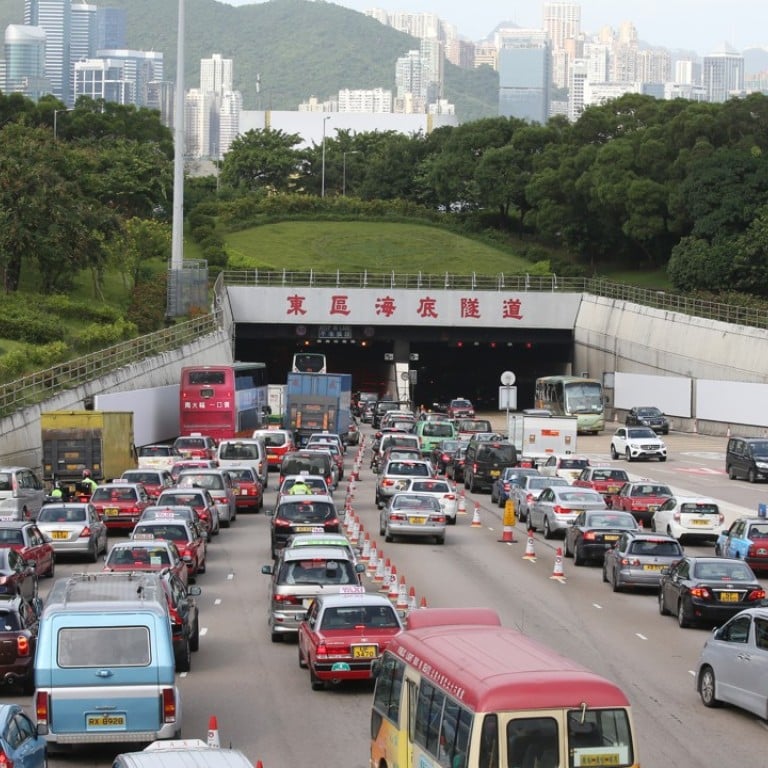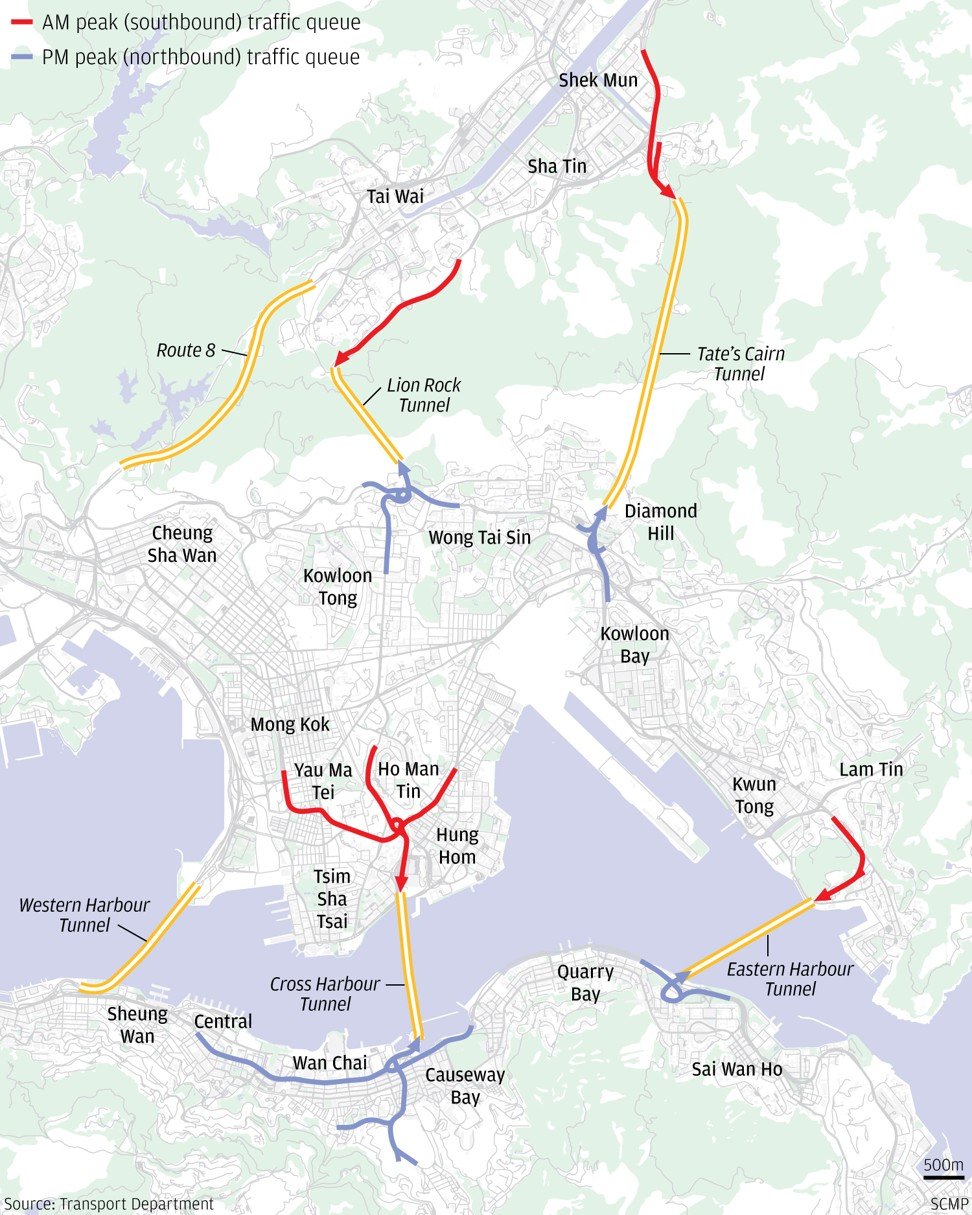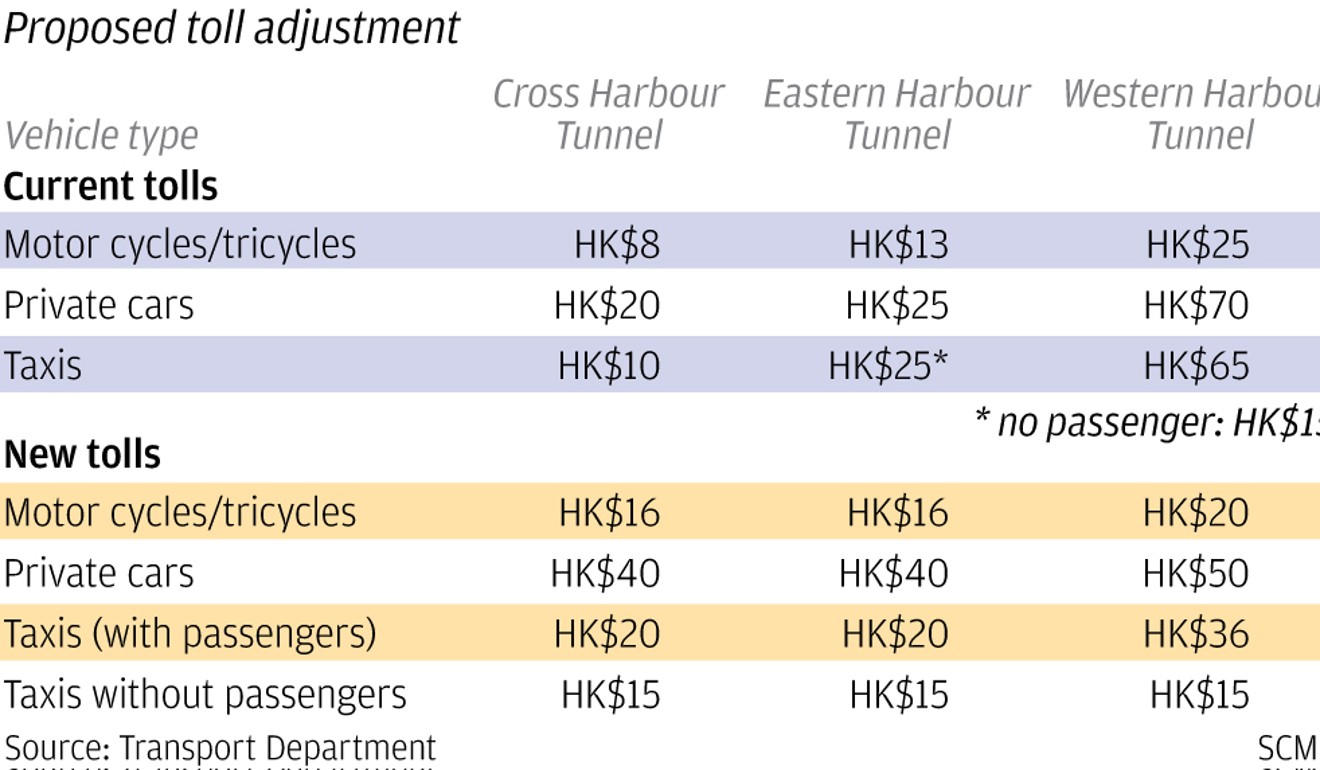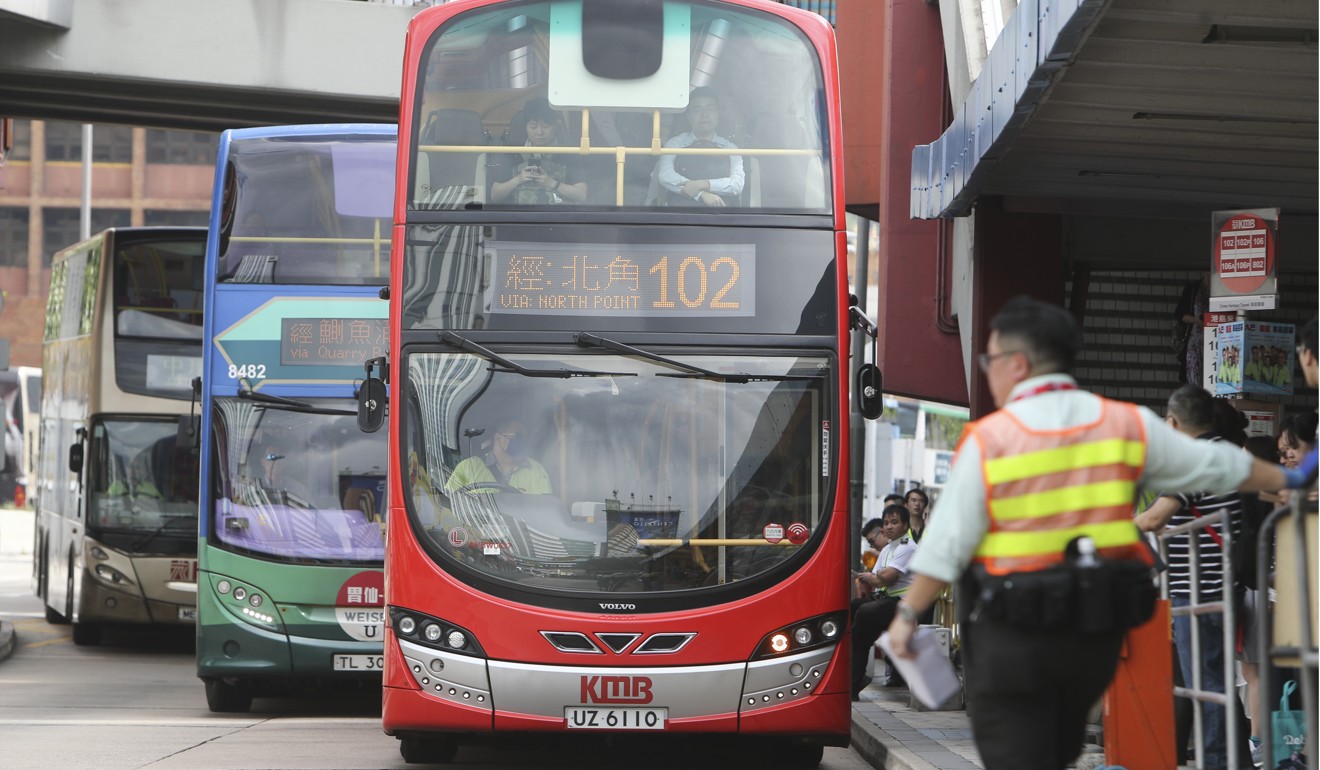
Cost of daily commute in Hong Kong could double as government bids to ease congestion at notorious harbour crossings
Tolls for private car owners, taxi drivers and motorcyclists to go up at Cross-Harbour Tunnel and Eastern Harbour Tunnel, while cost of using Western Harbour Tunnel set to drop
The cost of a daily commute for some Hong Kong motorists will double after the government announced plans to dramatically increase the cost of using the Cross-Harbour Tunnel and Eastern Harbour Tunnel.
In a bid to ease the long-standing congestion problem at the two tunnels, Chief Executive Carrie Lam Cheng Yuet-ngor said in her policy address on Wednesday that she wanted to “alleviate cross-harbour traffic congestion”.
In a bill expected to be presented to the Legislative Council, tolls will be raised to HK$40 for those using private cars, while motorcyclists will now pay HK$16.
However, the cost of travelling via the Western Harbour Tunnel between Yau Ma Tei and Sai Ying Pun will drop, with car owners paying HK$50 in the future, down from the HK$70 they presently pay. Motorcyclists will see the cost of a trip slip from HK$25 to HK$20.

The bill will outline the government’s hope that by driving motorists towards the western crossing, traffic during peak hours will be reduced by between 34 and 42 per cent at the Cross-Harbour Tunnel, and between 10 and 29 per cent at the eastern crossing.
Taxi journeys will now also be more expensive using the Cross-Harbour Tunnel through Hung Hom, with drivers soon to be charged HK$20 if they are carrying a passenger, twice the present rate. They will pay slightly less if they go via the Eastern Harbour Tunnel through Lam Tin, however, with that rate dipping from HK$25 to HK$20.
To encourage taxis to also use the western crossing, the cost of that will almost halve, dropping to HK$36 from HK$65. In addition, taxis without passengers will pay a standard HK$15 at all three crossings.
With private cars, taxis, and motorcycles making up about 75 per cent of all cross-harbour traffic, Lam said the increase in tolls would hopefully alleviate congestion.

“We must make effective use of the larger design capacity of the Western Harbour Tunnel (WHT) by encouraging some of the private cars, taxis and motorcycles currently using the Cross Harbour Tunnel or the Eastern Harbour Tunnel to use the WHT instead, so as to effectively alleviate cross-harbour traffic congestion and minimise the impact on non-cross-harbour traffic,” she said.
Lam said the government had reached an agreement with the owners of the WHT franchise on a toll compensation scheme.
The government will compensate WHT for the loss of tolls until its franchise expires on August 1, 2023, based on the actual vehicle numbers capped at a total of HK$1.8 billion.
There are more than 600,000 private cars on the road, and Democratic Party chairman Wu Chi-wai criticised the toll increases for private cars at the two public tunnels. Calling them “striking” he said he could not find any valid reason for the government to impose such drastic increases.

“I am afraid tens of thousands of private car owners will feel offended by this move.”
Civic Party lawmaker Jeremy Tam Man-ho agreed, and said the increase was unacceptable though he believed the toll adjustment would achieve the purpose of easing congestion at the two busy tunnels.
“To be reasonable, the tolls at the Cross-Harbour Tunnel and eastern tunnel should be in the range of HK$25 to HK$30, while the tolls at the western tunnel be reduced to about HK$40,” he said.
Frankie Yick Chi-ming, a Liberal Party lawmaker representing the transport sector, welcomed the proposal, in particular the standard toll of HK$15 for returning taxis without passengers at the three tunnels. He believed it would reduce the number of taxis refusing fares.
When will Hong Kong tackle the health menace of congested roads?
“It’s common for taxis to refuse fares for crossing the harbour as they are reluctant to pass through the busiest Cross-Harbour Tunnel, while unwilling to pay for higher tolls at the other tunnels,” he said. “Now the standard toll for returning taxis could serve as an inducement for them to accept hires.”
The new tolls at the three tunnels are expected to take effect from 1 January 2020.
Dr Ringo Lee, president of the Hong Kong Automobile Association (HKAA), welcomed the plan to change the amounts charged at all three tunnels. However, he said standardising the tolls would be a more effective solution to easing road congestion.
“HKAA hopes the government consider applying the same toll level to the three harbour tunnels in long run, so that motorists will not be influenced by cost when choosing their routes. This would effectively ease the traffic congestion at busy roads and make traffic flow more smoothly,” he said.

Separately, the government announced that it will waive tolls on almost all tunnels and roads for the city’s bus companies, a move that could cost about HK$1 billion.
In an attempt to reduce the possibility of a fare rise for commuters, buses will pay no tolls at all government tunnels and roads starting from early next year, and at the WHT from January 1, 2020.
It is estimated bus firms save some HK$280 million every year from the government toll waivers, while the government expects to pay a total of HK$956 million to compensate the western tunnel’s loss of tolls from public buses.
Franchised bus operators need to set up their own funds with the toll savings to offset the needs of raising fares or making fare concessions to benefit the wider public.
How Hong Kong can cut traffic congestion: invest in smart technology
“We have also reached an in-principle agreement with the franchisee of the WHT for the government to pay for franchised bus operators the tolls for using the WHT, so that the toll savings can be directly used to ease fare increase pressure, thereby alleviating the burden of public transport expenses on citizens,” Lam said.
Other transport initiatives include rolling out specific proposals for the Electronic Road Pricing Pilot Scheme in Central in the first half of next year for stakeholder consultation, and providing subsidies for franchised bus operators to install seat belts on the upper deck of buses to enhance bus safety.
At least 1,500 public parking spaces at government facilities and public spaces will be provided over the next five years, and the government will spend about HK$31 million for introducing a data collection system and a mobile app for 3,300 green minibuses to provide real-time arrival information.

